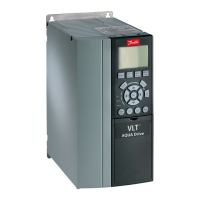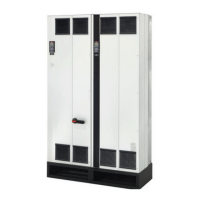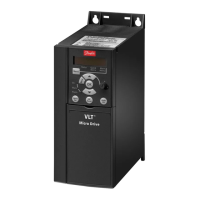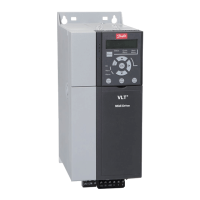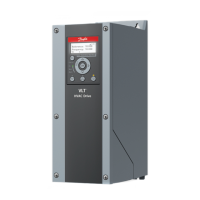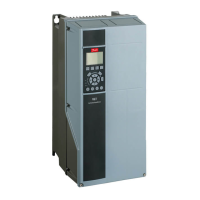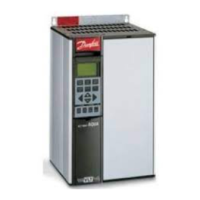10.11 Eciency
Eciency of the drive (η
VLT
)
The load on the drive has little eect on its eciency. In
general, the eciency is the same at the rated motor
frequency f
M,N
, whether the motor supplies 100% of the
rated shaft torque or only 75%, in case of part loads.
The eciency of the drive does not change even if other
U/f characteristics are selected. However, the U/f character-
istics inuence the eciency of the motor.
The eciency declines slightly when the switching
frequency is set to a value of above 5 kHz. The eciency is
slightly reduced when the mains voltage is 480 V, or if the
motor cable is longer than 30 m (98 ft).
Drive eciency calculation
Calculate the eciency of the drive at dierent speeds and
loads based on Figure 10.16. The factor in this graph must
be multiplied with the specic eciency factor listed in the
specication tables in chapter 7.1 Electrical Data, 380–480 V
and chapter 7.2 Electrical Data, 525–690 V .
1.0
0.99
0.98
0.97
0.96
0.95
0.93
0.92
0% 50% 100% 200%
0.94
Relative Eciency
130BB252.11
1.01
150%
% Speed
100% load 75% load 50% load 25% load
Figure 10.16 Typical Eciency Curves
Example: Assume a 160 kW, 380–480 V AC drive at 25%
load at 50% speed. Figure 10.16 shows 0.97 - rated
eciency for a 160 kW drive is 0.98. The actual eciency is
then: 0.97x 0.98=0.95.
Eciency of the motor (η
MOTOR)
The eciency of a motor connected to the drive depends
on magnetizing level. In general, the eciency is as good
as with mains operation. The eciency of the motor
depends on the type of motor.
In the range of 75–100% of the rated torque, the eciency
of the motor is practically constant, both when the drive
controls it and when it runs directly on the mains.
In small motors, the inuence from the U/f characteristic
on eciency is marginal. However, in motors from 11 kW
(14.75 hp) and up, the advantages are signicant.
Typically the switching frequency does not aect the
eciency of small motors. Motors from 11 kW (14.75 hp)
and up have their eciency improved (1–2%) because the
shape of the motor current sine-wave is almost perfect at
high switching frequency.
Eciency of the system (η
SYSTEM
)
To calculate system eciency, the eciency of the drive
(η
VLT
) is multiplied by the eciency of the motor (η
MOTOR
):
η
SYSTEM
=η
VLT
x η
MOTOR
10.12 Acoustic Noise
The acoustic noise from the drive comes from 3 sources:
•
DC intermediate circuit coils.
•
Internal fans.
•
RFI
lter choke.
Table 10.24 lists the typical acoustic noise values measured
at a distance of 1 m (9 ft) from the unit.
Enclosure size dBA at full fan speed
D1h/D3h/D5h/D6h 73
D2h/D4h/D7h/D8h 75
E1h–E4h 80
Table 10.24 Acoustic Noise
Test results performed according to ISO 3744 for audible
noise magnitude in a controlled environment. Noise tone
has been
quantied for engineering data record of
hardware performance per ISO 1996-2 Annex D.
A new fan control algorithm for E1h-E4h enlosure sizes
helps improve audible noise performance by allowing the
operator to select dierent fan operation modes based on
specic conditions. For more information, see
parameter 30-50 Heat Sink Fan Mode.
Electrical Installation Con...
VLT
®
AQUA Drive FC 202
172 Danfoss A/S © 01/2018 All rights reserved. MG22B222
1010
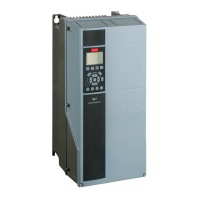
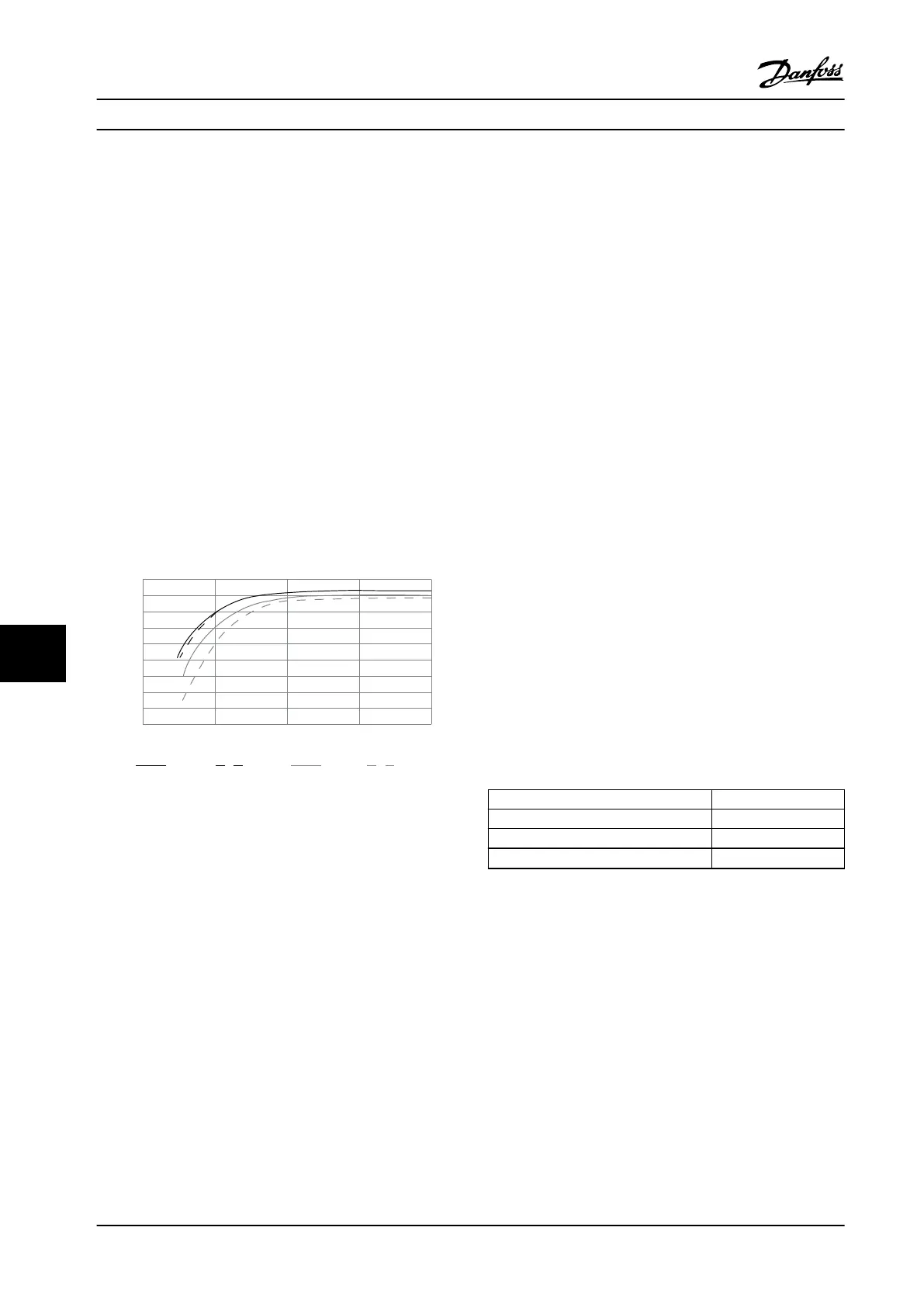